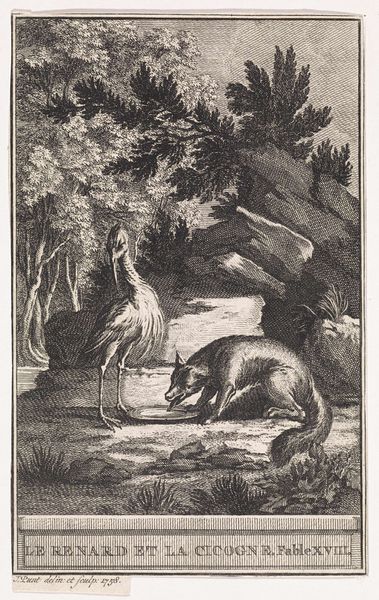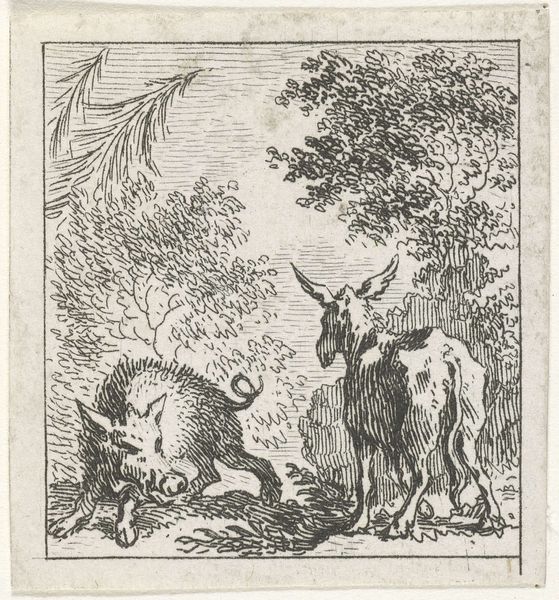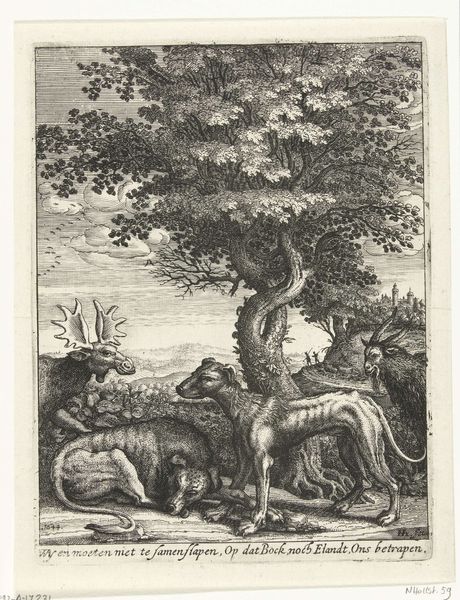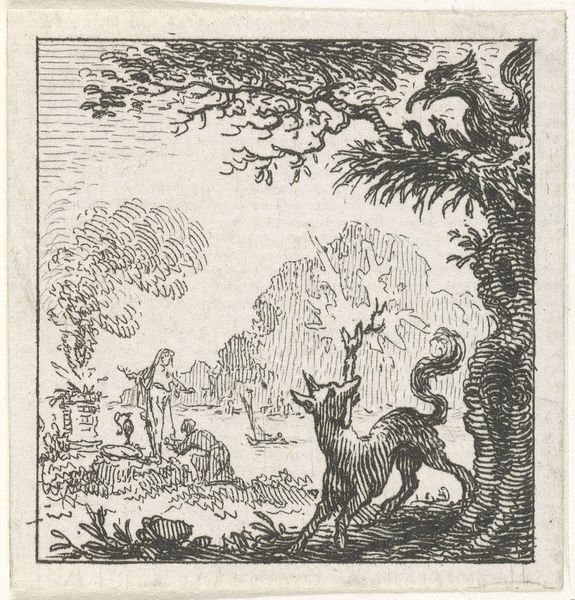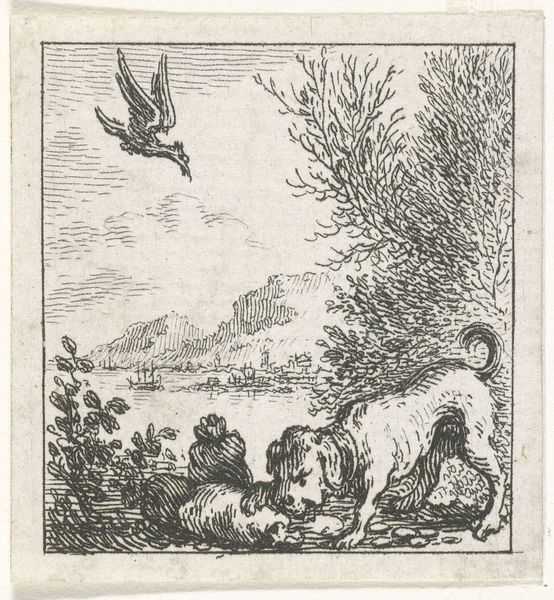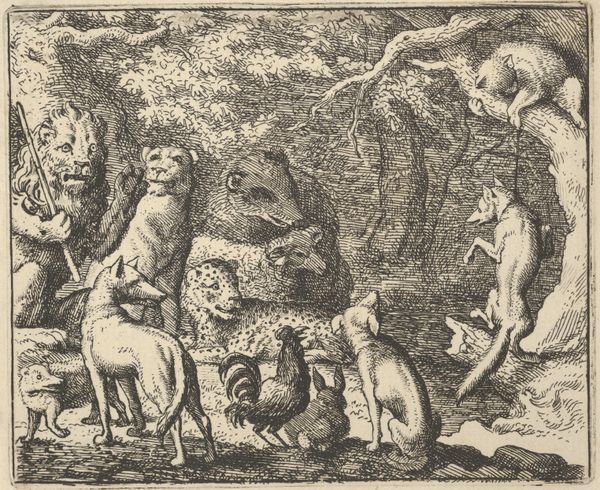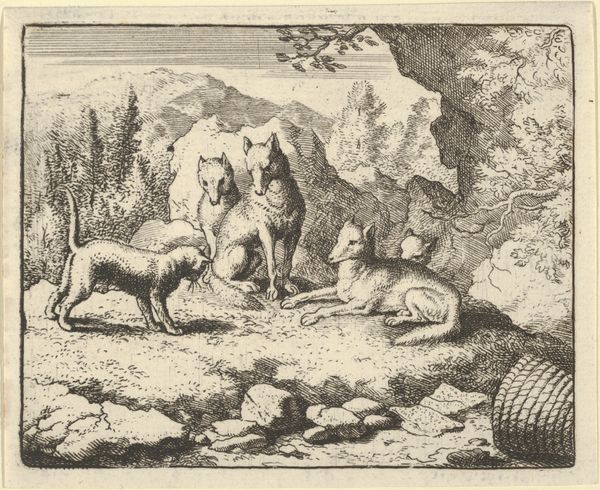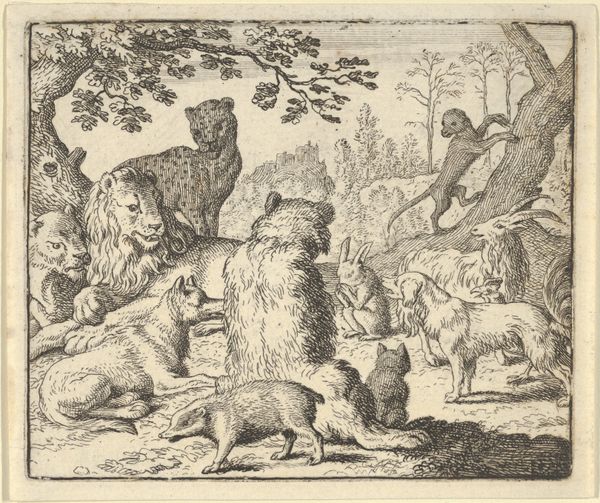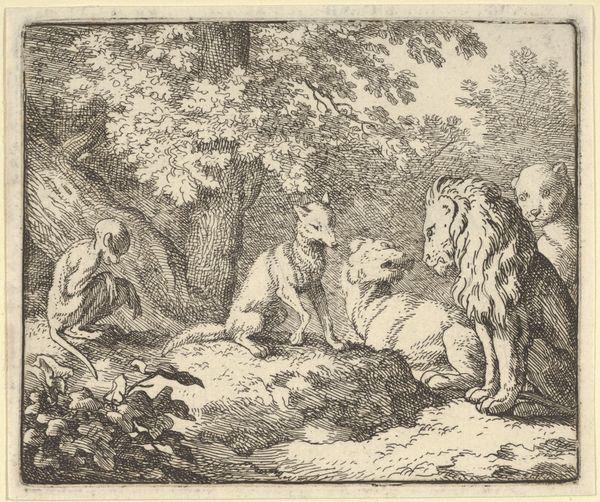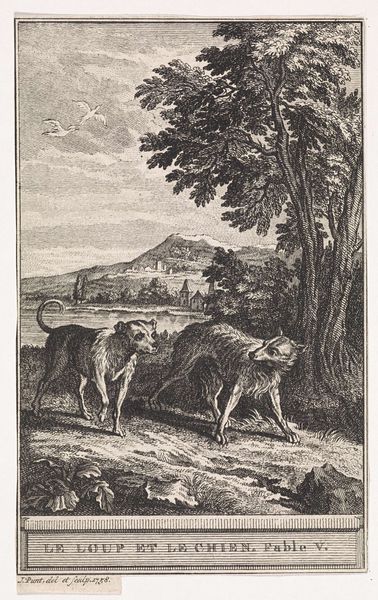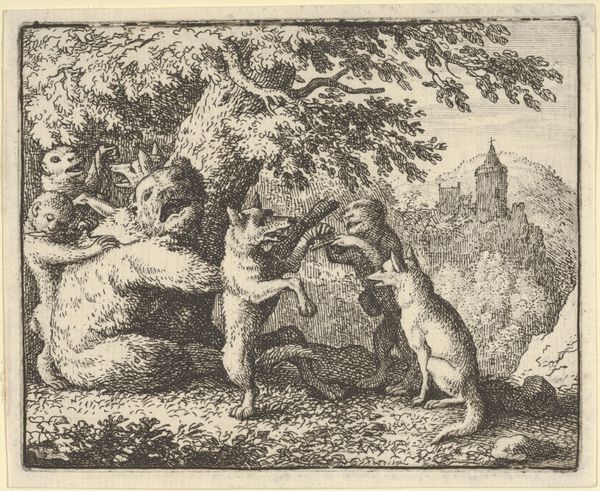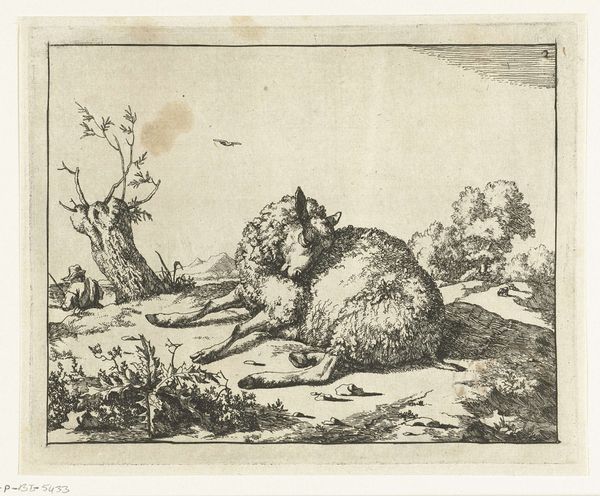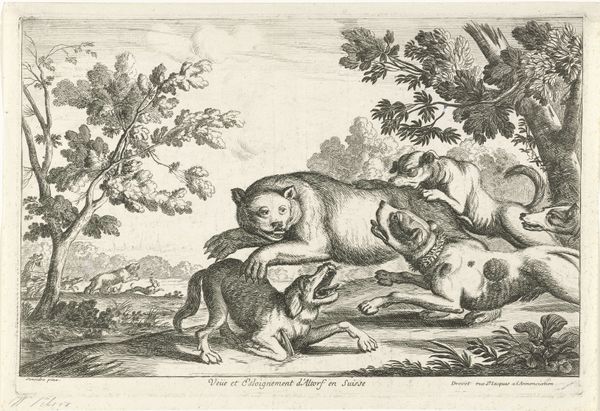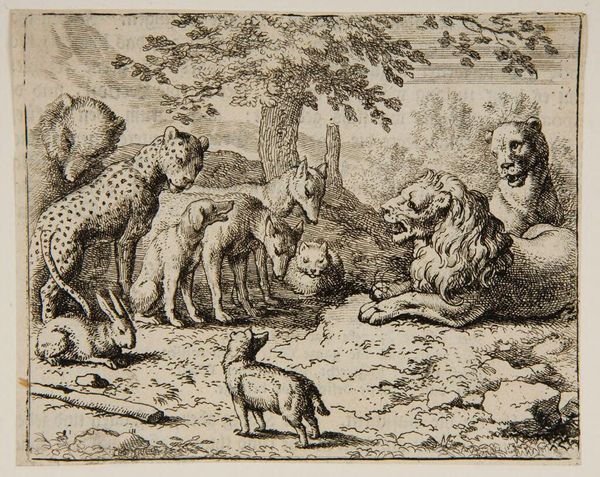
Dimensions: height 43 mm, width 42 mm
Copyright: Rijks Museum: Open Domain
Curator: Here we have Simon Fokke's etching from 1769, titled "Fable of the Dog and the Wolf." The work currently resides here at the Rijksmuseum. Editor: What strikes me immediately is the high contrast achieved solely through line work. It is a marvel, the textures that the artist was able to convey in just black and white. Curator: Fokke was known for his intricate detail and his engagement with popular moral tales. The choice of the fable highlights prevailing social anxieties about freedom versus security in that period. Notice the domestic dog and the wild wolf. Editor: I notice how the artist directs our eyes with diagonal lines, using them to delineate both figures; it draws our focus into the encounter itself. Semiotically, the direction suggests dynamism but also instability. Curator: Exactly. The fable would have been instantly recognizable to viewers then, encapsulating ideas around the costs of domestication and the inherent value of freedom, resonating within the Dutch Republic’s own political landscape. Editor: Can we unpack the texture and form a bit? Look closely; see how the wolf's lean musculature and shaggy coat are defined by tight, frantic hatching? Conversely, the dog is softer and plumper due to broader, smoother lines that add the implication of mass and girth to its form. The contrast in style adds to their inherent conflict. Curator: The very depiction of these animals in a landscape allows viewers to connect these visual dichotomies to larger ethical concerns regarding societal choices and the inherent values of freedom. Fokke was undoubtedly working within a larger context of sociopolitical dialogue, wasn't he? Editor: Indeed, through the strategic deployment of line and texture, Fokke crafts not just an image but also a compelling narrative that, even today, sparks contemplation on liberty and subjugation. The piece functions like an early editorial cartoon, loaded with pointed symbolism, and presented with precision. Curator: I agree. It's fascinating to consider the original context and the debates that a piece like this may have spurred about Dutch societal structures. Thank you for illuminating its compositional strategies, it's made me see the work in new ways. Editor: Likewise. Investigating the artist's method with the understanding of period narratives enhances the historical context of the piece.
Comments
No comments
Be the first to comment and join the conversation on the ultimate creative platform.
